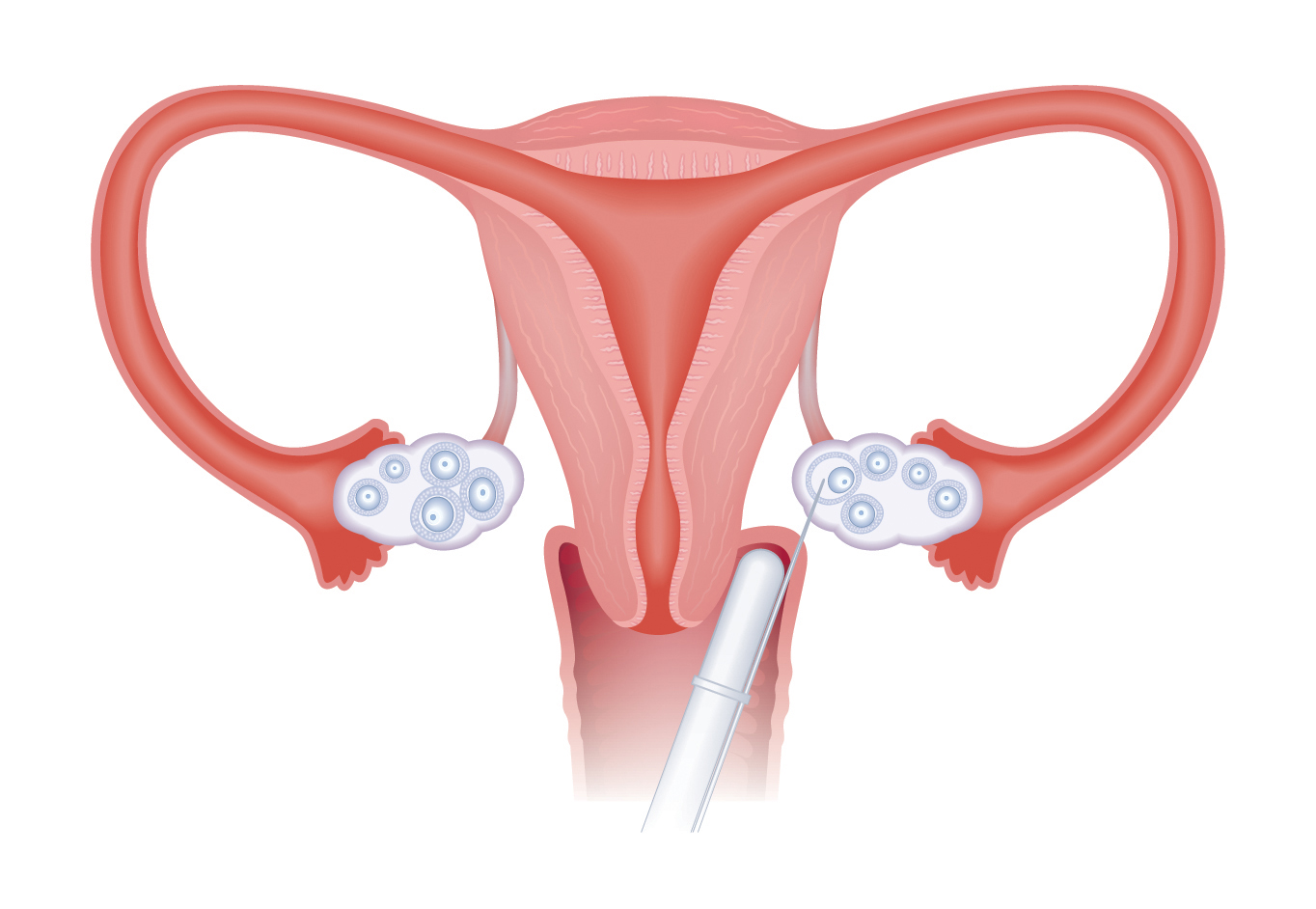In vitro fertilisation also called IVF means that fertilisation takes place in a glass well.
IVF consists of an ovarian stimulation using hormones to allow the ovaries to produce more than 1 egg. These eggs are then taken out by a simpel ultrasound guided vaginal puncture. The eggs are then fertilised outside the body and after a culture periode of 2-5 days, the developing embryos are then placed back into the uterus.
Thus IVF is recommended for women lacking the tubes, unexplained infertility, endometriosis, but also for couples suffering from severe bad sperm quality.
Before starting an IVF treatment several things have to be controlled:
Treatment with in vitro fertilisation implies that:
- The man produces sperm cells, or has sperm cells that we in special cases can extract from the testicle or from the epididymis. If the man does not produce sperm cells, donor sperm cells can be used.
- The woman has ovulation, either by herself or through hormone treatment.
- The woman has a normal uterus.
- The couple is otherwise healthy.
- You have received proper medical counselling.
These above mentioned items have to be in order as this will ensure an optimal production of eggs, ensure the proper treatment of the sperm and provide the best uterus for implantation. If there are no eggs or no sperm, oocyte donation or sperm donation can be considered.
IVF step by step
Below you get a short overview of the steps of the IVF treatment:
1. Preliminary consultation with the doctor
Here we can make sure that you are well informed about your treatment.
2. Examination for infertility
The couple is examined for causes of infertility.
3. Hormone stimulation
The woman gets a hormone stimulation to regulate the egg production and the egg maturation.
4. Ultrasound scan of the follicles
The right time for egg removal is determined.
5. Egg aspiration (aspiration)
The eggs are aspirated from the ovaries. Aspiration is performed with a thin needle through the vagina wall. The doctor will administer a local anaesthetic in the vagina wall. Egg aspiration is illustrated below:

Illustration kindly provided by Ferring
6. Sperm sample
The man produces a sperm sample on the day of the egg aspiration. If donor sperm cells or frozen sperm cells are to be used, these are thawed.
7. Fertilisation of the eggs (fertilisation)
The aspirated eggs are fertilised with the sperm cells in the laboratory.
8. Egg transfer (transfer)
The fertilised egg/eggs are transferred to the woman’s uterus for normal growth.
9. After-treatment
The endometrium is stimulated to prepare it for receiving the egg.
10. Pregnancy test
The pregnancy test is made 14 days after the egg transfer.
